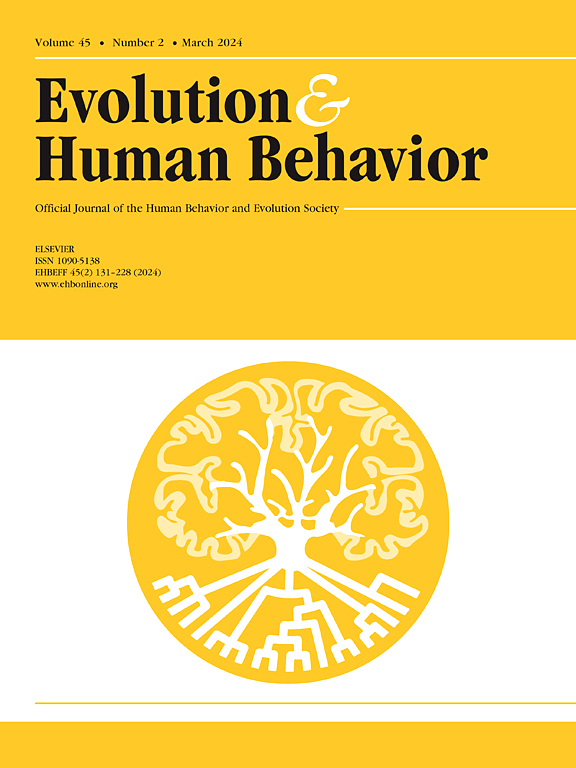儿童热手思维
IF 3.2
1区 心理学
Q1 BEHAVIORAL SCIENCES
引用次数: 0
摘要
在随机数据序列中感知虚幻的条纹或团块的倾向——热手现象——已被确定为人类的普遍现象,与我们寻找团块资源的进化史有关。我们探讨了这种对随机性的误解,以及更普遍地说,与生态相关的统计思维是如何在个体上发展的。基于之前对成人的研究,我们开发了三个基于平板电脑的决策任务,以评估美国和德国3- 10岁的儿童如何决定连续事件是否会连续进行,他们对随机性的理解,以及他们在空间依赖条件下对随机性进行推理的能力。我们的分析表明,儿童和成人一样,在搜索和推理一维和二维统计分布时,对块状资源抱有强烈的期望。随着年龄的增长,这种对资源集中的心理默认会有所减少。未来的研究应该探索可能的早期干预措施,以提高统计素养,并尽量减少对条纹和模式的(错误)认知对日常生活的有害影响。本文章由计算机程序翻译,如有差异,请以英文原文为准。
Hot hand thinking in children
A tendency to perceive illusory streaks or clumps in random sequences of data—the hot hand phenomenon—has been identified as a human universal tied to our evolutionary history of foraging for clumpy resources. We explored how this misperception of randomness and, more generally, ecologically relevant statistical thinking develops ontogenetically. Based on previous work with adults, we developed three tablet-based decision-making tasks that assessed how 3- to 10-year-old children in the U.S. and Germany decide whether sequential events will continue in a streak or not, their understanding of randomness, and their ability to reason about randomness in spatially dependent terms. Our analyses suggest that children, like adults, hold strong expectations of clumpy resources when they search through and reason about 1- and 2-dimensional statistical distributions. This evolved psychological default to clumped resources decreases somewhat with age. Future research should explore possible early interventions to improve statistical literacy and minimize the detrimental effects that (mis)perceptions of streaks and patterns can have on everyday life.
求助全文
通过发布文献求助,成功后即可免费获取论文全文。
去求助
来源期刊

Evolution and Human Behavior
生物-行为科学
CiteScore
8.30
自引率
9.80%
发文量
62
审稿时长
82 days
期刊介绍:
Evolution and Human Behavior is an interdisciplinary journal, presenting research reports and theory in which evolutionary perspectives are brought to bear on the study of human behavior. It is primarily a scientific journal, but submissions from scholars in the humanities are also encouraged. Papers reporting on theoretical and empirical work on other species will be welcome if their relevance to the human animal is apparent.
 求助内容:
求助内容: 应助结果提醒方式:
应助结果提醒方式:


